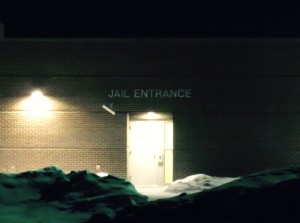
WASHINGTON — The percentage of U.S. residents who were in jail dropped from midyear (the last weekday in June) 2012 to midyear 2016, the Bureau of Justice Statistics announced today. Jails include confinement facilities operated under the authority of a sheriff, police chief or city or county administrator.
The jail incarceration rate fell from 237 inmates per 100,000 U.S. residents at midyear 2012 to 229 inmates per 100,000 U.S. residents at midyear 2016, a decline of 3.4 percent. The incarceration rate fell 11.2 percent from midyear 2008, when there were 258 inmates per 100,000 U.S. residents, to midyear 2016.
County and city jails held 740,700 inmates at midyear 2016. This was below the peak of 785,500 inmates in 2008, the year with the most jail inmates since 1982, when BJS began the Annual Survey of Jails data collection.

In 2016, jails reported 10.6 million admissions, continuing a steady decline since 2008, when there were 13.6 million admissions to local jails. On average, those admitted to jail in 2016 stayed 25 days. Admissions include all persons booked into a jail on a formal charge, repeat offenders booked on new charges, and persons sentenced to weekend programs and entering the facility for the first time.
On December 31, 2016 (year-end), most (65 percent) people held in jail were not convicted of an offense but were awaiting court action on a current charge. The remaining 35 percent were sentenced offenders or convicted offenders awaiting sentencing. Nearly 7 in 10 inmates were held in jail on felony charges, while 1 in 4 were held for misdemeanor offenses.

The rate at which people were held in local jails (the incarceration rate) varied widely by racial and ethnic groups. At year-end 2016, non-Hispanic blacks (599 per 100,000 black U.S. residents) had the highest jail incarceration rate, followed by American Indian or Alaska Natives (359 per 100,000 AIAN residents).
Hispanics (185 per 100,000 Hispanic residents) and non-Hispanic whites (171 per 100,000 white residents) were incarcerated in jails at a similar rate at year-end 2016. Blacks were incarcerated in jail at a rate 3.5 times that of whites at year-end 2016. This was down from 5.6 times the rate in 2000.
Jails employed 226,300 full-time staff at year-end 2016, an increase from 213,000 at year-end 2015. Nearly 8 in 10 jail employees were correctional officers, including deputies, monitors and other custody staff who spend more than half of their time with the incarcerated population. In 2016, the inmate-to-correctional officer ratio was 4 to 1.
The rated capacity of jails to hold inmates continued to increase, reaching 915,400 beds at year-end 2016. The rated capacity is the maximum number of beds or inmates assigned to a jail by a rating official. Eighty percent of jail beds were occupied in 2016, a decline from 95 percent in 2007, as jail capacity grew while the inmate population declined. An estimated 17 percent of all jail jurisdictions were operating at or above 100 percent of their rated capacity in 2016.
These findings are from BJS’s Annual Survey of Jails, Census of Jails and Deaths in Custody Reporting Program.







